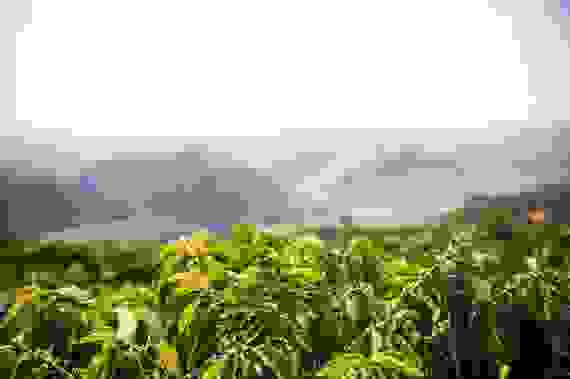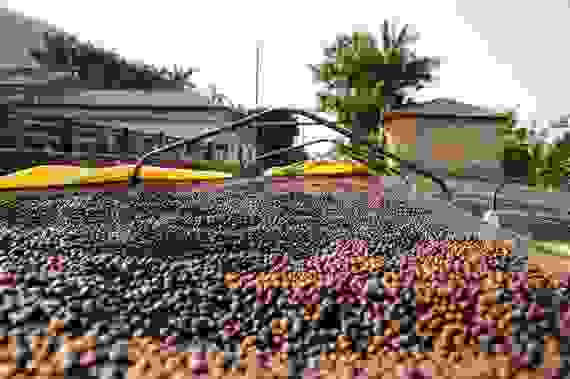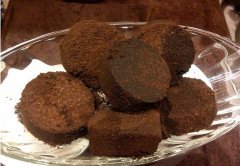What are the nine links to distinguish between "good coffee" and "bad coffee"?
Clancy Rose, the second winner of the 2015 US Coffee Championship Baker's Choice Award, teaches you to distinguish between good and bad coffee from nine aspects: in addition to the differences in coffee beans themselves, the growth environment, climate, aroma, drying and storage time of coffee all affect the quality of coffee.
How to judge "good" coffee and "bad" coffee? Finally, an expert is willing to make it clear!
Clancy Rose, the second winner of the 2015 US Coffee Championship Baker's Choice Award, teaches you to distinguish between good and bad coffee from nine aspects: in addition to the differences in coffee beans themselves, the growth environment, climate, aroma, drying and storage time of coffee all affect the quality of coffee.

Microclimate where coffee beans grow
Coffee comes in many shapes and sizes, and although most of them are the same shape, it is best to grow specific varieties according to different local microclimates. The best farmers will adjust measures to local conditions.
Picking time
At the end of the harvest season, coffee beans are picked before they are fully ripe in preparation for the next season. Most of these coffee beans are classified as bad varieties called "subgrade" because they are not ideal.
Do you want to highlight the ideal feature or cover up the defect in the baking process?
Not to mention that any roaster, even ordinary people, can produce dry, gray and dark coffee. This is a way to cover up defects, to produce more complex fruity or caramel-flavored coffee, high-quality coffee beans and attention to detail are indispensable.

The degree of attention during drying
Once the coffee beans are picked, there are several different ways to dry the beans. The easiest way is to leave them outside for a few weeks, or use an expensive dryer. High-quality coffee beans are tested at any time to make sure they don't get moldy, while poor ones are left unattended in the sun because labor costs are too high.
Whether the coffee is cooled with water
There are too many coffee beans roasted at one time in a large coffee roaster, so it is impossible to use air to cool down, and it is necessary to spray water mist quickly inside. Although there is no obvious data, many bakers believe that although the water evaporates quickly, if the water comes into contact with the coffee beans, it will reduce the overall quality.

The amount of coffee bought by the roaster
From the perspective of farm grade, there is a direct relationship between quality and quantity. The quantity of high-quality coffee in the world is by no means sufficient for large roasters. Small companies can buy 5-10 bags, as well as other high-quality coffee for limited or small-scale operations, but these quantities are far less than a batch order from a large roaster. Once a roaster reaches a certain scale, their ability to provide high-quality coffee is greatly reduced.
Storage time
If the coffee beans used in the coffee shop come from a good local baker, they are coffee beans within a week, which ensures freshness. Different from coffee beans from big brands but not of high quality.

Emphasize "quality" or "quantity"
In order to expand the scale, many manufacturers will eventually sacrifice quality because of the quantity of production. When roasting coffee beans for £2 million a week, there is no time for subtleties.
Analysis of the aroma of coffee
What makes coffee special is its fragrance. Although professional bakers often think it silly to take taste notes, if a company uses general terms such as "smooth" or "blod", it shows that they are not trying to present more subtle features.
Important Notice :
前街咖啡 FrontStreet Coffee has moved to new addredd:
FrontStreet Coffee Address: 315,Donghua East Road,GuangZhou
Tel:020 38364473
- Prev

Avoid caffeine when drinking coffee
Coffee, taste mellow, can refresh the mind, relieve stress, whether you are actively in love with coffee or passive need coffee, coffee drinkers in China are gradually increasing, how to drink coffee health has become a hot spot of people's attention. Patients with cardiovascular disease should stay away from coffee. When people think of coffee, they think of caffeine, which is a mild form of coffee.
- Next

The wonderful use of coffee grounds turning into environmentally friendly flower fertilizer and coffee grounds
Recently, Starbucks global service month Changsha station caring environmental protection community tour was held in Liaojiawan community. More than 300 young volunteers bring green wind to the community through a series of activities such as environmental protection classes, community cleaning, flea markets and so on. More than 300 community residents took an environmental lesson in the interactive game. At the scene of the wonderful use of coffee grounds, resident Li Chunying painted himself on an environmentally friendly paper cup.
Related
- Beginners will see the "Coffee pull flower" guide!
- What is the difference between ice blog purified milk and ordinary milk coffee?
- Why is the Philippines the largest producer of crops in Liberia?
- For coffee extraction, should the fine powder be retained?
- How does extracted espresso fill pressed powder? How much strength does it take to press the powder?
- How to make jasmine cold extract coffee? Is the jasmine + latte good?
- Will this little toy really make the coffee taste better? How does Lily Drip affect coffee extraction?
- Will the action of slapping the filter cup also affect coffee extraction?
- What's the difference between powder-to-water ratio and powder-to-liquid ratio?
- What is the Ethiopian local species? What does it have to do with Heirloom native species?

